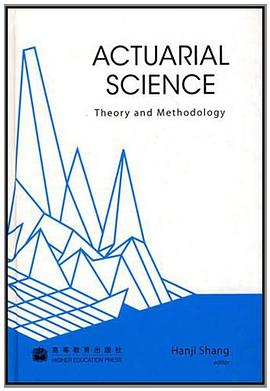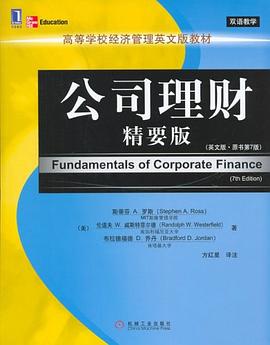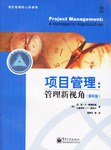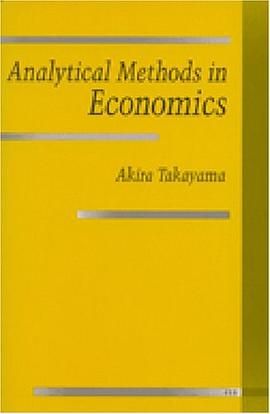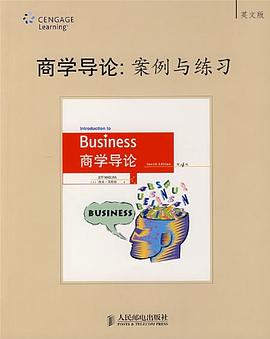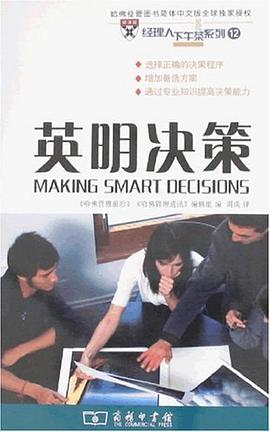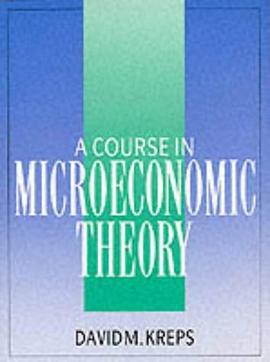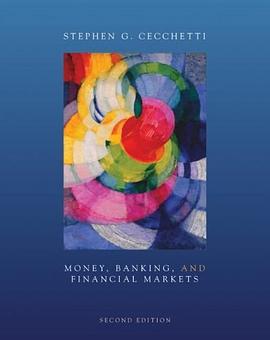

具体描述
This book is an introduction to calculus and linear algebra for students of disciplines such as economics, finance, business, management, and accounting. It is intended for readers who may have already encountered some differential calculus, and it will also be appropriate for those with less experience, possibly used in conjunction with one of the many more elementary texts on basic mathematics.
作者简介
目录信息
Contents
1. Mathematical models in economics
1.1 Introduction
1.2 A model of the market
1.3 Market equilibrium
1.4 Excise tax
1.5 Comments
Worked examples
Main topics/Key terms notations and formulae
Exercises
2. Mathematical terms and notations
2.1 Sets
2.2 Functions
2.3 Composite functions
2.4 Graphs and equations
Worked examples
Main topics/Key terms notations and formulae
Exercises
3. Sequences, recurrences, limits
3.1 Sequences
3.2 The first-order recurrence
3.3 Limits
3.4 Special cases
Worked examples
Main topics/Key terms, notations and formulae
Exercises
4. The elements of finance
4.1 Interest and capital growth
4.2 Income generation
4.3 The interval ofcompounding
Worked examples
Main topics/Key terms notations and formulae
Exercises
5. The cobweb model
5.1 How stable is market equilibrium?
5.2 An example
5.3 The general linear case
5.4 Economic imerpretation
Worked examples
Main topics/Key terms notations and formulae
Exercises
6. Introduction to calculus
6.1 The rate ofchange of a function
6.2 Rules for finding the derivative
6.3 Marginal cost as a derivative
6.4 The derivative of a composite function
6.5 The derivative ot' an inverse function
Worked examples
Main topics/Key terms notations and tbrmulae
Exercises
7. Some special functions
7.1 Powers
7.2 The exponential function and its properties
7.3 Continuous compounding of interest
7.4 The logarithm function
7.5 Trigonometrical t'unctions
Worked examples
Main topics/Key terms notations and formulae
Exercises
8. Introduction to optimisation
8.1 Profit maximisation
8.2 Critical points
8.3 Optimisation in an interval
8.4 Infinite intervals .
Worked examples
Main topics/Key terms notations and formulae
Exercises
9. The derivative in economics-1
9.1 Elasticity of demand
9.2 Profit maximisation again
9.3 Competition versus monopoly
Worked examples
Main topics/Key terms notations and formulae
Exercises
10. The derivative in economics--11
10.1 The efficient small firm
10.2 Startup and breakeven points
Worked examples
Main topics/Key terms notations and formulae
Exercises
11. Partial derivatives
11.1 Functions of several variables
11.2 Partial derivatives
11.3 The chain rule
Worked examples
Main topics/Key terms notations and formulae
Exercises
12 Applications of partial derivatives
12.1 Functions defined implicitly
12.2 The derivative of an implicit function
12.3 Contours and isoquants
12.4 Scale effects and homogeneous functions
Worked examples
Main topics/Key terms notations and formulae
Exercises
13 Optimisation in two variables
13.1 Profit maximisation again
13.2 How prices are related to quantities
13.3 Critical points
13.4 Maxima, minima, and saddle points
13.5 Classification of critical points - introduction
13.6 The classification of critical points in general
Worked examples
Main topics/Key terms, notations and formulae
Exercises
14. Vectors preferences and convexity
14.1 Vectors and bundles
14.2 Prices and budgets
14.3 Preferences, utility, and indifference curves
14.4 Linear and convex combinations
14.5 Choosing optimal bundles
Worked examples
Main topics/Key terms, notations and formulae
Exercises
15. Matrix algebra
15.1 What is a matrix?
15.2 Matrix multiplication
15.3 How to make money with matrices
Worked examples
Main topics/Key terms notations and formulae
Exercises
16. Linear equations-1
16.1 A two-industry 'economy
16.2 Linear equations in matrix form
16.3 Solutions of linear equations by row operations
16.4 The echelon form in general
Worked examples
Main topics/Key terms, notations and formulae
Exercises
17. Linear equations-11
17.1 Consistent and inconsistent systems
17.2 The rank of a consistent system
17.3 The general solution in vector notation
17.4 Arbitrage portfolios and state prices
Worked examples
Main topics/Key terms, notations and formulae
Exercises
18. Inverse matrices
18.1 The square linear system
18.2 The inverse of a square matrix
18.3 Calculation of the inverse
18.4 The inverse of a 2x2 matrix
18.5 IS-LM analysis
Worked examples
Main topics/Key terms notations and formulae
Exercises
19. The input-output model
19.1 An economy with many industries
19.2 The technology matrix,
19.3 Why is there a solution?.
Worked examples
Main topics/Key terms, notations and formulae
Exercises
20. Determinants
20.1 Determinants
20.2 The determinant as a test for invertibility
20.3 Cramer's rule
Worked examples
Main topics/Key terms, notations and formulae
Exercises
21. Constrained optimisacion
21.1 The elementary theory of the firm
21.2 The method of Lagrange multipliers
21.3 The cost function
21.4 The efficient small firm again
21.5 The Cobb-Douglas firm
Worked examples
Main topics/Key terms, notations and formulae
Exercises
22. Lagrangeans and the consumer
22.1 Lagrangeans: a more general formulation
22.2 The elementary theory of the consumer
22.3 The price ratio and the tangency condition
22.4 The consumer's demand functions
22.5 The indirect utility function
Worked examples
Main topics/Key terms, notations and formulae
Exercises
23. Second-order recurrence equations
23.1 A simplified national economy
23.2 Dynamics of the economy
23.3 Linear homogeneous recurrences
23.4 Non-homogeneous recurrences
Worked examples
Main topics/Key terms notations and formulae
Exercises
24. Macroeconomic applications
24.1 Recurrence equations in practice
24.2 Oscillatory solutions
24.3 Business cycles
24.4 Improved models of the economy
Worked examples
Main topics/Key terms notations and formulae
Exercises
25 Areas and integrals
25.1 The consumer surplus
25.2 The concept of area
25.3 Anti-derivatives and integrals
25.4 Definite integrals
25.4 Standard integrals
Worked examples
Main topics/Key terms notations and formulae
Exercises
26. Techniques of integration
26.1 Integration by substitution
26.2 Definite integrals by substitution
26.3 Integration by parts
26.4 Partial fractions
Worked examples
Main topics/Key terms notations and formulae
Exercises
27. First-order differential equations
27.1 Continuous-time models
27.2 Some types of differential equations
27.3 Separable differential equations
27.4 A continuous-time model of price adjustment
Worked examples
Main topics/Key terms notations and formulae
Exercises
28. Second-order differential equations
28.1 Market trends and consumer demand
28.2 Linear equations with constant coefficients
28.3 Solution of homogeneous equations
28.4 Non-homogeneous equations
28.5 Behaviour of solutions
Worked examples
Main topics/Key terms notations and formulae
Exercises
Solutions to selected exercises
Index
· · · · · · (收起)
1. Mathematical models in economics
1.1 Introduction
1.2 A model of the market
1.3 Market equilibrium
1.4 Excise tax
1.5 Comments
Worked examples
Main topics/Key terms notations and formulae
Exercises
2. Mathematical terms and notations
2.1 Sets
2.2 Functions
2.3 Composite functions
2.4 Graphs and equations
Worked examples
Main topics/Key terms notations and formulae
Exercises
3. Sequences, recurrences, limits
3.1 Sequences
3.2 The first-order recurrence
3.3 Limits
3.4 Special cases
Worked examples
Main topics/Key terms, notations and formulae
Exercises
4. The elements of finance
4.1 Interest and capital growth
4.2 Income generation
4.3 The interval ofcompounding
Worked examples
Main topics/Key terms notations and formulae
Exercises
5. The cobweb model
5.1 How stable is market equilibrium?
5.2 An example
5.3 The general linear case
5.4 Economic imerpretation
Worked examples
Main topics/Key terms notations and formulae
Exercises
6. Introduction to calculus
6.1 The rate ofchange of a function
6.2 Rules for finding the derivative
6.3 Marginal cost as a derivative
6.4 The derivative of a composite function
6.5 The derivative ot' an inverse function
Worked examples
Main topics/Key terms notations and tbrmulae
Exercises
7. Some special functions
7.1 Powers
7.2 The exponential function and its properties
7.3 Continuous compounding of interest
7.4 The logarithm function
7.5 Trigonometrical t'unctions
Worked examples
Main topics/Key terms notations and formulae
Exercises
8. Introduction to optimisation
8.1 Profit maximisation
8.2 Critical points
8.3 Optimisation in an interval
8.4 Infinite intervals .
Worked examples
Main topics/Key terms notations and formulae
Exercises
9. The derivative in economics-1
9.1 Elasticity of demand
9.2 Profit maximisation again
9.3 Competition versus monopoly
Worked examples
Main topics/Key terms notations and formulae
Exercises
10. The derivative in economics--11
10.1 The efficient small firm
10.2 Startup and breakeven points
Worked examples
Main topics/Key terms notations and formulae
Exercises
11. Partial derivatives
11.1 Functions of several variables
11.2 Partial derivatives
11.3 The chain rule
Worked examples
Main topics/Key terms notations and formulae
Exercises
12 Applications of partial derivatives
12.1 Functions defined implicitly
12.2 The derivative of an implicit function
12.3 Contours and isoquants
12.4 Scale effects and homogeneous functions
Worked examples
Main topics/Key terms notations and formulae
Exercises
13 Optimisation in two variables
13.1 Profit maximisation again
13.2 How prices are related to quantities
13.3 Critical points
13.4 Maxima, minima, and saddle points
13.5 Classification of critical points - introduction
13.6 The classification of critical points in general
Worked examples
Main topics/Key terms, notations and formulae
Exercises
14. Vectors preferences and convexity
14.1 Vectors and bundles
14.2 Prices and budgets
14.3 Preferences, utility, and indifference curves
14.4 Linear and convex combinations
14.5 Choosing optimal bundles
Worked examples
Main topics/Key terms, notations and formulae
Exercises
15. Matrix algebra
15.1 What is a matrix?
15.2 Matrix multiplication
15.3 How to make money with matrices
Worked examples
Main topics/Key terms notations and formulae
Exercises
16. Linear equations-1
16.1 A two-industry 'economy
16.2 Linear equations in matrix form
16.3 Solutions of linear equations by row operations
16.4 The echelon form in general
Worked examples
Main topics/Key terms, notations and formulae
Exercises
17. Linear equations-11
17.1 Consistent and inconsistent systems
17.2 The rank of a consistent system
17.3 The general solution in vector notation
17.4 Arbitrage portfolios and state prices
Worked examples
Main topics/Key terms, notations and formulae
Exercises
18. Inverse matrices
18.1 The square linear system
18.2 The inverse of a square matrix
18.3 Calculation of the inverse
18.4 The inverse of a 2x2 matrix
18.5 IS-LM analysis
Worked examples
Main topics/Key terms notations and formulae
Exercises
19. The input-output model
19.1 An economy with many industries
19.2 The technology matrix,
19.3 Why is there a solution?.
Worked examples
Main topics/Key terms, notations and formulae
Exercises
20. Determinants
20.1 Determinants
20.2 The determinant as a test for invertibility
20.3 Cramer's rule
Worked examples
Main topics/Key terms, notations and formulae
Exercises
21. Constrained optimisacion
21.1 The elementary theory of the firm
21.2 The method of Lagrange multipliers
21.3 The cost function
21.4 The efficient small firm again
21.5 The Cobb-Douglas firm
Worked examples
Main topics/Key terms, notations and formulae
Exercises
22. Lagrangeans and the consumer
22.1 Lagrangeans: a more general formulation
22.2 The elementary theory of the consumer
22.3 The price ratio and the tangency condition
22.4 The consumer's demand functions
22.5 The indirect utility function
Worked examples
Main topics/Key terms, notations and formulae
Exercises
23. Second-order recurrence equations
23.1 A simplified national economy
23.2 Dynamics of the economy
23.3 Linear homogeneous recurrences
23.4 Non-homogeneous recurrences
Worked examples
Main topics/Key terms notations and formulae
Exercises
24. Macroeconomic applications
24.1 Recurrence equations in practice
24.2 Oscillatory solutions
24.3 Business cycles
24.4 Improved models of the economy
Worked examples
Main topics/Key terms notations and formulae
Exercises
25 Areas and integrals
25.1 The consumer surplus
25.2 The concept of area
25.3 Anti-derivatives and integrals
25.4 Definite integrals
25.4 Standard integrals
Worked examples
Main topics/Key terms notations and formulae
Exercises
26. Techniques of integration
26.1 Integration by substitution
26.2 Definite integrals by substitution
26.3 Integration by parts
26.4 Partial fractions
Worked examples
Main topics/Key terms notations and formulae
Exercises
27. First-order differential equations
27.1 Continuous-time models
27.2 Some types of differential equations
27.3 Separable differential equations
27.4 A continuous-time model of price adjustment
Worked examples
Main topics/Key terms notations and formulae
Exercises
28. Second-order differential equations
28.1 Market trends and consumer demand
28.2 Linear equations with constant coefficients
28.3 Solution of homogeneous equations
28.4 Non-homogeneous equations
28.5 Behaviour of solutions
Worked examples
Main topics/Key terms notations and formulae
Exercises
Solutions to selected exercises
Index
· · · · · · (收起)
读后感
评分
评分
评分
评分
评分
用户评价
评分
评分
评分
评分
评分
相关图书
本站所有内容均为互联网搜索引擎提供的公开搜索信息,本站不存储任何数据与内容,任何内容与数据均与本站无关,如有需要请联系相关搜索引擎包括但不限于百度,google,bing,sogou 等
© 2026 book.wenda123.org All Rights Reserved. 图书目录大全 版权所有



